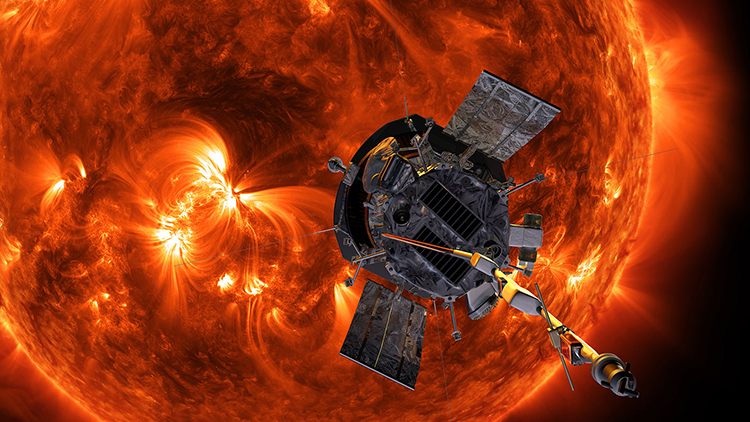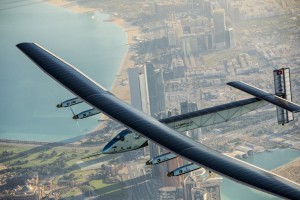Probing the Sun
Wednesday, September 19th, 2018September 19, 2018
The sun is the center of our solar system and vital to life on Earth, but there is a lot we do not know about it. On August 12, the United States National Aeronautics and Space Administration (NASA) launched the Parker Solar Probe that will help unravel some of the the sun’s secrets. Over the next few years, the probe will orbit the sun at least 24 times and come blisteringly close to its surface. The probe will reach its first perihelion (the point of an orbit that is closest to the sun) on November 5.

In this NASA illustration, the Parker Solar Probe approaches the sun. The probe launched from Earth on Aug. 12, 2018, and will make its first close pass of the sun on November 5. Credit: NASA/Johns Hopkins APL/Steve Gribben
The Parker Solar Probe is record setting in many ways. It will come within 3.8 million miles (6.1 million kilometers) of the sun, closer than any spacecraft in history. The current record-holder, NASA’s Helios 2, came within 27 million miles (43 million kilometers) of the sun in 1976. (Helios was the god of the sun in Greek mythology.) In comparison, Earth orbits about 93 million miles (150 million kilometers) from the sun, and Mercury, the planet nearest the sun, orbits about 36 million miles (58 million kilometers) away.
The Parker Solar Probe will also be the fastest object ever created by humans—another record it will take from Helios 2—traveling at some 430,000 miles (700,000 kilometers) per hour. Its high speed comes from the huge gravitational pull of the sun. As an object nears the sun, the sun’s gravity accelerates it, much in the way a drain accelerates a circling toy boat.
The probe is also the first to be named after a living person. In 1958, American scientist Eugene Parker hypothesized that ionized atoms were streaming from the sun. He coined the term solar wind for this phenomenon. This explained why a comet’s tail points away from the sun, no matter which direction it is traveling—something that had been observed for centuries but never fully understood. NASA named the groundbreaking probe after Parker to honor his contributions to heliophysics, the study of the sun and its effects on space.
Not far from the sun’s surface, the solar wind speeds up to more than 155 miles (250 kilometers) per second. Scientists are hoping to use the Parker Solar Probe to understand how and why this happens. The probe will dip into the sun’s corona (outer atmosphere) during its closest approaches. Temperatures there reach an unimaginable 4 million °F (2.2 million °C), far hotter than the temperature at the sun’s surface (10,000 °F, or 5,500 °C). Measurements made by the probe will help make sense of this temperature difference.
Getting close to the sun is not easy. The Parker Solar Probe launched from a Delta IV Heavy rocket, one of the most powerful rockets ever built. But it launched in the opposite direction of Earth’s orbit, causing it to slow down in relation to the sun and fall towards it. It will also use the gravity of Venus to slow it down further. At seven different times throughout its mission, it will pass close to Venus, which will act as a brake and hurtle the probe closer to the sun.
Operating close to the sun is also difficult. The Parker Solar Probe is protected by a thick, carbon-composite heat shield that faces the sun at all times. The sun interferes with radio signals at such close range, so the probe must operate without human contact for much of the time. Even getting power is difficult so close to the sun. Of course, solar energy is plentiful, but the scorching temperatures can fry solar cells. Parker’s panels will peek out from behind its heat shield only when the craft is at a safe distance, and they retract as the probe nears the sun.
Improving our knowledge of solar science may help prevent disasters on Earth. Solar events called coronal mass ejections (CME’s) come from the corona and can damage satellites and electrical systems on Earth. Findings from the Parker Solar Probe may help scientists better predict CME’s, allowing officials to temporarily shut down power grids to prevent major damage.



